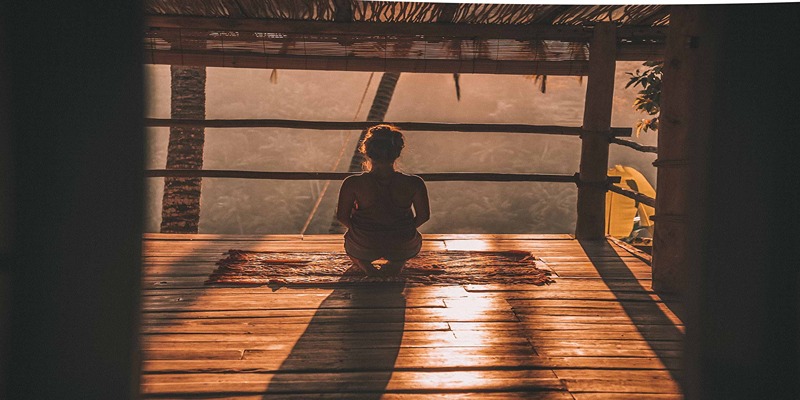As you begin your yoga adventure, you will discover a multitude of positions, each with its own set of advantages and disadvantages. Pigeon Pose is one of the most famous stretches for increasing flexibility and opening the hips. Pigeon Pose may be intimidating for some, but this article will help break down the barriers and open up new possibilities for yogis of all skill levels. Learning the ins and outs of this position can help you connect with your yoga practice on a deeper level and get physical advantages as well. Let us not lose sight of the fact that yoga is more than a series of postures; it is a path to enlightenment and complete health as we delve into this asana. Together, let's take the first step on this path to transformation.

Preparatory Poses for Pigeon Pose
Gentle Hip Openers
It is essential to do light hip openers before trying Pigeon Pose. You can enter the posture with greater ease and safety if you do these warmup stretches beforehand. To begin, sit with your knees bent and your foot soles touching; this position is called the Butterfly Stretch. Bend forward slightly, bringing your knees closer to the floor. Drop your hips forward and bring your front knee to rest over your ankle to enter the Low Lunge. For a deep and efficient Pigeon Pose, hip flexibility is essential, and this sequence helps you get there without hurting yourself.
Strengthening Core Muscles
To maintain your balance in Pigeon Pose, a strong abdominal region is essential. Start in the traditional Plank Position, making sure your body is straight from head to toes. Keep your body in this posture as you tighten your abs. To target the obliques, switch to a side plank position by placing your weight on one hand and stacking your feet. Building the strength needed to maintain balance and alignment in Pigeon Pose is facilitated by these core exercises. In addition to providing stability for this asana, a strong core may improve your posture generally and lessen the chances that yoga will cause you lower back discomfort.
Step-by-Step Guide to Pigeon Pose
Beginning the Pose
Begin in Downward-Facing Dog to enter Pigeon Pose. Position your right leg behind your right wrist as you bring it forward. Keep your left leg straight and in the middle as you put it out behind you. Placing your right ankle slightly forward of your left hip is the correct position. Finding a happy medium between your two hips is the real test here. If you want to master the Pigeon Pose, here is the place to start. Keep the pose's structural integrity intact while paying attention to your body and altering as required for comfort.
Adjustments and Alignment
To get the most out of Pigeon Pose and avoid harm, it's important to align correctly. Take into account your flexibility level, but ideally your front shin should be parallel to the front of your mat. Keep your torso straight and your hips squared to the front. Support your hips using a folded blanket or yoga block if you're having trouble with this. Maintain a straight back leg and point your toes directly back. Maintain an upright posture to lengthen your spine. These modifications make the position more effective while also guaranteeing a safe and long-lasting yoga practice.
Deepening the Pose
Concentrate on progressively deepening the front fold to enhance Pigeon Pose. Lean forward from the upright torso stance, bringing your chest forward as a leader. Lay flat on your back, if your flexibility permits, or drop yourself onto your forearms while extending your arms above. Let your body sink further into the stretch with each exhalation. Keeping your breath steady and deep can help you relax your hips more fully. Keep in mind that what matters more than the depth of the posture is the quality of the stretch and alignment. Flexibility and depth in the position will improve with regular practice.
Common Mistakes and How to Avoid Them
Alignment Errors
The most common mistake people make while doing Pigeon Pose is not lining up their hips and legs correctly. Excessive strain is often caused when practitioners either twist their rear leg or fall into the hip of the bent leg. To sidestep this problem, make sure your hips are well distributed and tighten your core muscles. To help straighten and support the bent leg, place a blanket or block under the hip. Be careful that your rear leg does not bend at the knee, but rather that your foot remains firmly planted on the ground. Your posture and the pose's efficacy may be greatly enhanced with these little tweaks.

Breathing Techniques
Pigeon Pose is a great example of how yoga breathing may be neglected despite its importance. If you hold your breath or breathe shallowly, you could tighten your muscles and reduce the pose's advantages. To help you relax and get deeper into the stretch, try breathing from your diaphragm. Before slowly sinking into the posture, take a deep breath in to elongate the spine and get into it. Not only does this breathing technique help you stretch more, but it also adds a contemplative element to your practice, making it more complete. Keep in mind that in yoga, breath connects the mind and body.
Variations of Pigeon Pose
Due to the balance and hip flexibility necessary, Pigeon Pose may be intimidating for beginners. One useful variant is the Reclining Pigeon, which entails lying on one's back and creating a figure-four configuration by crossing one's ankle over the other knee. Feel the strain in your hip from crossing your legs as you gently draw the uncrossed leg towards you. This lessens the need for flexibility and balance while yet providing the same hip-opening effects. A yoga block or cushion placed under the hip of the bent leg may provide support and alleviate tension, which is another variant. If you're just starting out with yoga, these variants will help you become more flexible and confident.
Conclusion
With all its subtleties and variants, Pigeon Pose is more than simply a physical position; it's a path to greater yoga knowledge and personal growth. From increased flexibility and hip opening to mental calm and concentration, this position has something for everyone, from novices to seasoned practitioners. Realize that yoga is not a static practice but rather an evolving path, and welcome each stage of your journey with open arms and a thoughtful attitude. Keep in mind that doing yoga postures isn't the point; what really matters is the personal growth that you'll get as a result.




